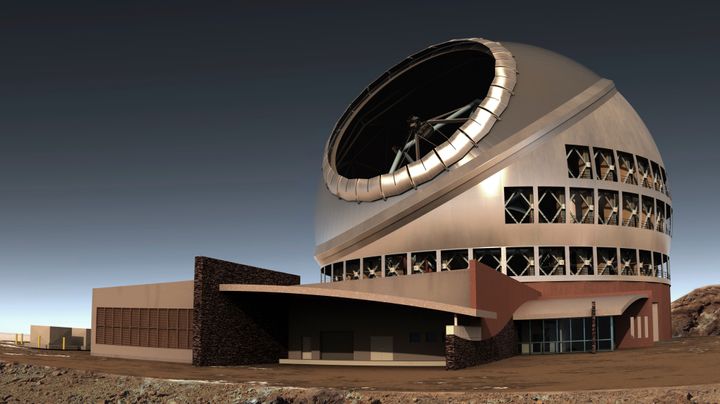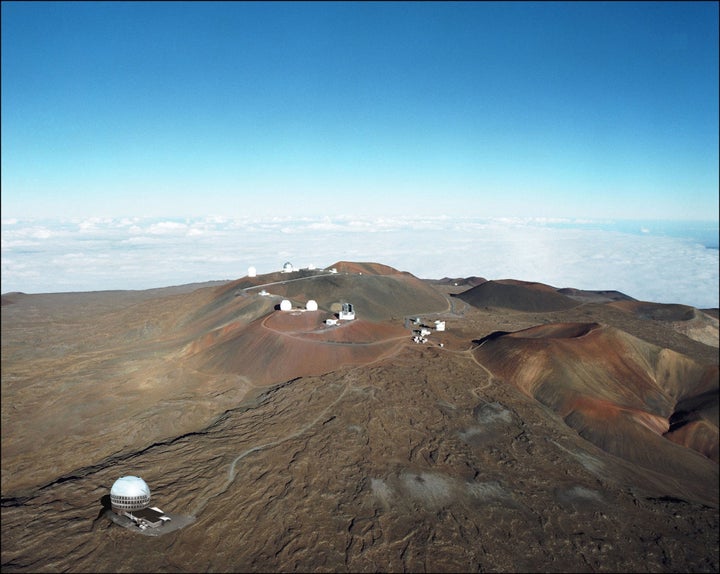
Following a protracted legal battle and yearslong protests that left a state deeply divided, the Hawaii Supreme Court has cleared the final legal hurdle for a $1.4 billion telescope project to resume construction atop the Big Island’s Mauna Kea, a mountain considered sacred by many Native Hawaiians.
In a 4-1 ruling on Tuesday, the court upheld a 2017 decision by the state’s Board of Land and Natural Resources to grant a construction permit on Mauna Kea for the Thirty-Meter Telescope, better known as TMT.
The court said it had carefully considered the arguments put forth by the project’s opponents who’ve described the telescope’s construction as an attack on indigenous culture and a desecration of sacred land. But, per the ruling, it had ultimately determined that “astronomy and Native Hawaiian uses on Mauna Kea have co-existed for many years and the TMT Project will not curtail or restrict Native Hawaiian uses.”
The ruling also noted the telescope’s potential to “answer some of the most fundamental questions regarding our universe” ― a benefit that won’t just be enjoyed by Native Hawaiians but all of humankind.
Coveted by scientists for the dry and clean air at its summit and its distance from light pollution, Mauna Kea ― considered the world’s tallest mountain ― is already home to the largest astronomical observatory on Earth, with 13 working telescopes operated by astronomers from 11 different countries.
The TMT project will be considerably larger than any of these existing structures, however. The telescope is projected to be 18 stories tall with structures spanning 1.44 acres.
TMT’s backers, which include Canada’s National Research Council and the University of California, have said the project will open doors to unparalleled scientific opportunities. Astronomers will be able to see 13 billion light-years away with the advanced instrument and observe “forming galaxies at the very edge of the observable Universe, near the beginning of time,” the project’s builders have said..
Supporters of the telescope have said the project will also provide jobs and other opportunities for Hawaiian workers and students. But opponents of the project have stressed that these upsides are beside the point.
“We are not anti-science or astronomy,” Lanakila Manguil, an activist who’s been protesting against the TMT project for years, told HuffPost in 2017. “It’s about construction, development and industrial-sized work happening in conservation lands and particularly very sacred lands to our people.”
Many Native Hawaiians believe Mauna Kea is the origination point of the Hawaiian islands. The mountain, which measures about 32,000 feet from seafloor to summit, is home to burial sites and is where Native Hawaiians have been known to bury their umbilical cords as a way of connecting to the sacred land.
Plans for the TMT project date back to 2009 ― and the project has been mired in controversy since then. Protests broke out in 2011 after an initial construction permit was granted by the state’s land board. Three years later, activists blocked groundbreaking attempts at Mauna Kea’s summit and in 2015, thousands of protesters rose up across the Hawaiian islands to denounce the project and more than 30 people were arrested for protesting on the mountain.
Later that year, the Hawaiian Supreme Court invalidated the 2011 permit, ruling that the land board’s approval process had been flawed. The project’s builders were forced to apply for a new permit, which was granted by the board in 2017 and later appealed by opponents.
Following the state’s Supreme Court decision this week to uphold the permit, Hawaii’s attorney general Russell Suzuki told AP that further legal action could still be possible. A request could be sent to the U.S. Supreme Court to review the decision, he said.
Activists, however, have expressed doubt as to whether further legal pursuit would actually be helpful. It may be time, some have suggested, to ditch the courts and “take to the streets.”
“The court is the last bastion in democracy,” Kealoha Pisciotta, one of the leaders of the opposition movement, told AP. “If we lose the integrity of the court, then you’re losing normal law and order, and the only other option is people have to rise up.”
There is still strong opposition to the telescope’s construction across Hawaii, but recent opinion polls have shown that the number of Hawaiians who approve of the project has increased. A March newspaper poll found that 72 percent of Native Hawaiians supported TMT’s construction on Mauna Kea, compared to just 39 percent in 2016. Overall, 77 percent of Hawaii residents said they approved of the telescope.

Reacting to the court’s decision, Henry Yang, chair of TMT’s board, said the project was “grateful” for the ruling and vowed to be “good stewards” on Mauna Kea.
“We thank all of the community members who contributed their thoughtful views during this entire process,” Yang said in a statement. “We remain committed to being good stewards on the mountain and inclusive of the Hawaiian community. We honor the culture of the islands and its people and do our part to contribute to its future through our ongoing support of education and Hawaii Islands’ young people.”
Hawaii Gov. David Ige (D) also expressed gratitude to the court for its ruling, which he described as a “monumental task” that involved the review of “thousands of pages of documents and testimony over many years.”
“We’re pleased the court carefully considered and weighed all the varied and passionate testimony about TMT. We believe this decision is fair and right and will continue to keep Hawai‘i at the forefront of astronomy,” Ige said.
The project will now need to submit its construction plans to the land board for review and approval, Ige’s office noted, adding that those plans will have to take cultural protocols into consideration.
